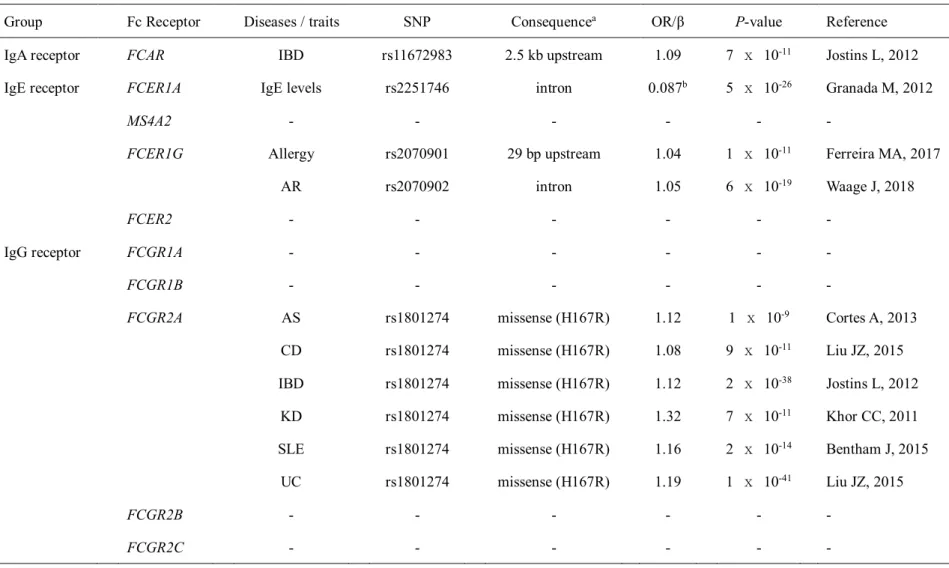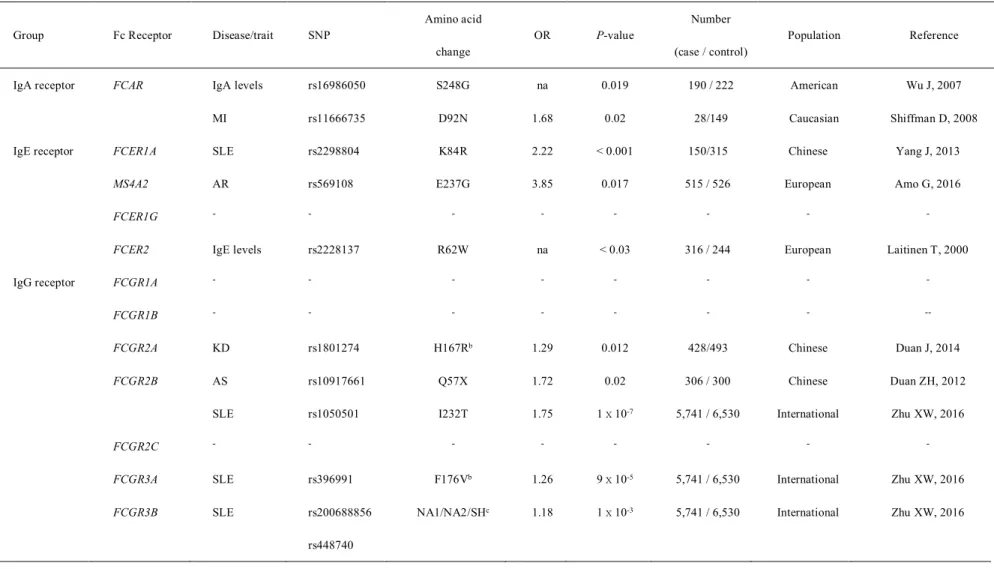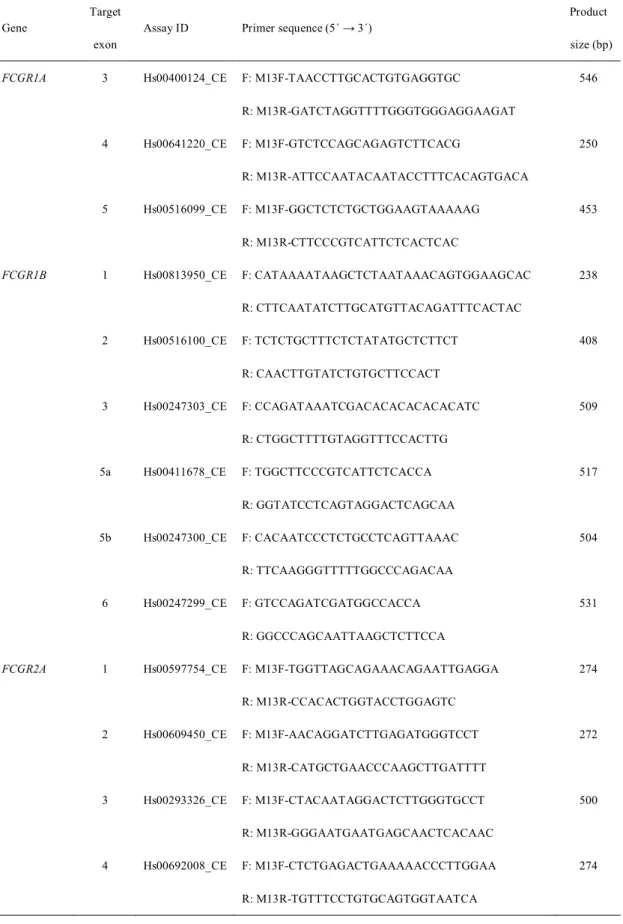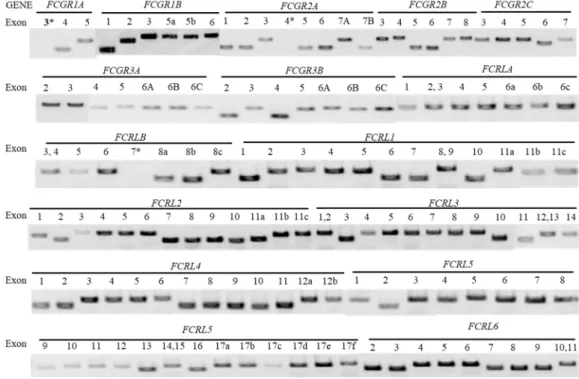The aim of this thesis research is to identify the genetic risk factors associated with susceptibility to KD and IVIG resistance in the immunoglobulin-related genes. We initially selected seven candidate nsSNPs in the genes involved in glycosylation of immunoglobulin G from our unpublished whole exome sequencing (WES) data with 94 IVIGs. However, there was no significant association of the candidate nsSNPs selected in the immunoglobulin G glycosylation genes with IVIG resistance.
Finally, in the third chapter, to identify coding variants associated with IVIG resistance in KD, we reanalyzed our previous genome-wide association study (GWAS) data, made with DNA samples from 296 patients with KD, including 101 IVIG non-responders and 195 IVIG responders.
GENERAL INTRODUCTION
However, KD patients did not respond to IVIG and had persistent or recurrent fever and a high risk of coronary complications, including myocardial infarction, ischemic heart disease, or sudden death (Durongpisitkul K, 2003; Kato H, 1996; Burns JC, 1996). In addition to immunoglobulin Fc receptors, glycosylation of the Fc binding region of immunoglobulins is critical for eliciting an appropriate immune response (Daeron M, 2014). The only treatment of KD is the injection of a single high dose of IVIG.
But one of the proposed mechanisms of action of IVIG depends on its functional interaction with Fc receptors (especially IgG and Fc gamma receptors).
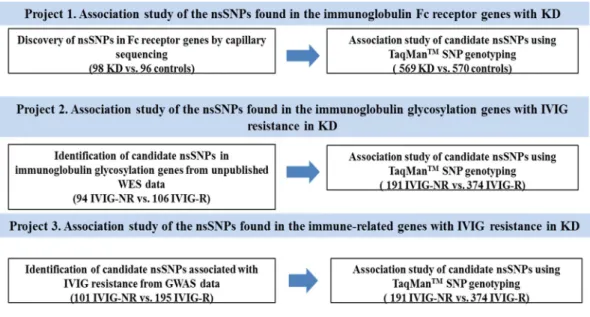
LITERATURE REVIEW
Kawasaki disease (KD)
Clinical features and diagnosis
Epidemiology
Treatment
Genetics of KD
Genetic influence
Genetic studies of KD
Among the genes identified, BLK and FCGR2A support that B-cell dysfunction is associated with abnormal immune responses in KD patients. KD subgroup-specific KD susceptibility genes: In a previous IVIG response-stratified GWAS analysis, a variant in BCL2L11 (rs3789065) showed KD association in IVIG responders, but not in IVIG non-responders (Kwon YC, 2018). FCGR2A(rs1801274), discovered as a common KD susceptibility gene, shows a specific association in male KD patients, and not in female KD patients.
ITPKC and CASP3 were identified by genome-wide linkage analysis, while the remainder were identified by GWAS.
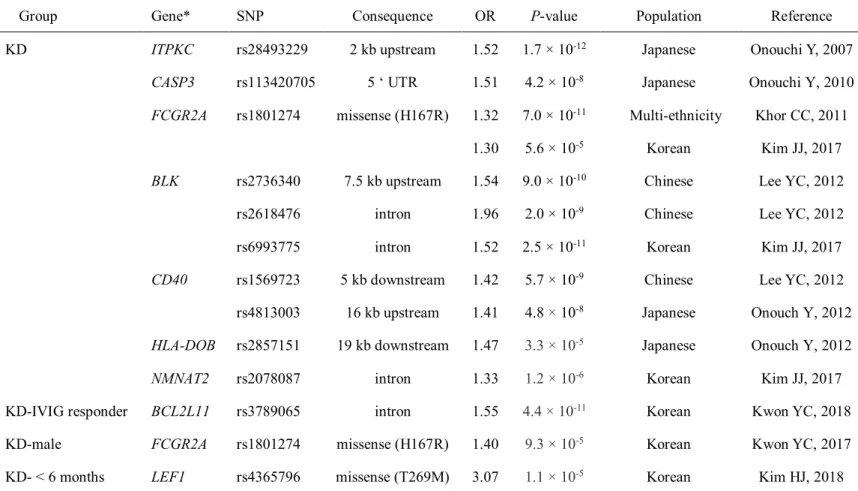
Immunoglobulin Fc receptor genes
Immunoglobulins: ligand of the Fc receptors
IgG received from the mother through the placenta provides humoral immunity until the own immunity develops (Fouda GG, 2018). IgM – IgM is the first immunoglobulin expressed on the surface of naïve B cells as a monomeric form (Harry WS, 2009). Through antigen maturation and stimulation, IgM is secreted as a pentamer, the largest antibody.
Human Fc receptor genes
In this study, we evaluated the involvement of Fc receptor genes as KD susceptibility genes by performing the association study of nsSNPs in the genes encoding the Fc receptors with KD cases and a group of healthy controls. Through the primary capillary sequencing assay using 98 DNA samples from KD patients, 20 nsSNPs were found in the coding regions of 15 Fc receptor genes. By capillary sequencing, a total of 20 nsSNPs were found in the coding regions of the 15 Fc receptor genes using 50 or 98 DNA samples collected from KD patients (Table 8).
Selection of seven candidate nsSNPs found in the human Fc receptor genes for replication study. ASSOCIATION EXAMINATION OF THE NON-SYNONYMAL SNPs FOUND IN THE IMMUNOGLOBULIN G GLYCOSYLATION GENES WITH IVIG RESISTANT. However, there was no significant association for seven candidate nsSNPs in the immunoglobulin glycosylation genes.
We selected candidate nsSNPs in immunoglobulin glycosylation genes using our unpublished WES data (94 IVIG-nonresponsive KD cases and 106 IVIG-responsive KD cases) for association with IVIG resistance in KD. A nonsynonymous polymorphism in the IL16 gene, Asn1147Lys, is associated with IVIG resistance in KD. Associations of IL16 rs11556218 genotype (risk allele: T) with clinical variables of KD patients in IVIG subgroups.
In this study, we identified a novel coding variant (rs11556218, p.Asn1147Lys) in the IL16 gene associated with susceptibility to IVIG non-response in KD patients. Overall, the available data suggest that T cells may play an important role in the mechanism underlying IVIG resistance in KD. Second, we performed linkage study for IVIG resistance in KD using seven candidate nsSNPs in genes involved in immunoglobulin G glycosylation that were selected from our unpublished WES data.
These results indicate that IL16 is involved in the mechanism of IVIG resistance in KD.
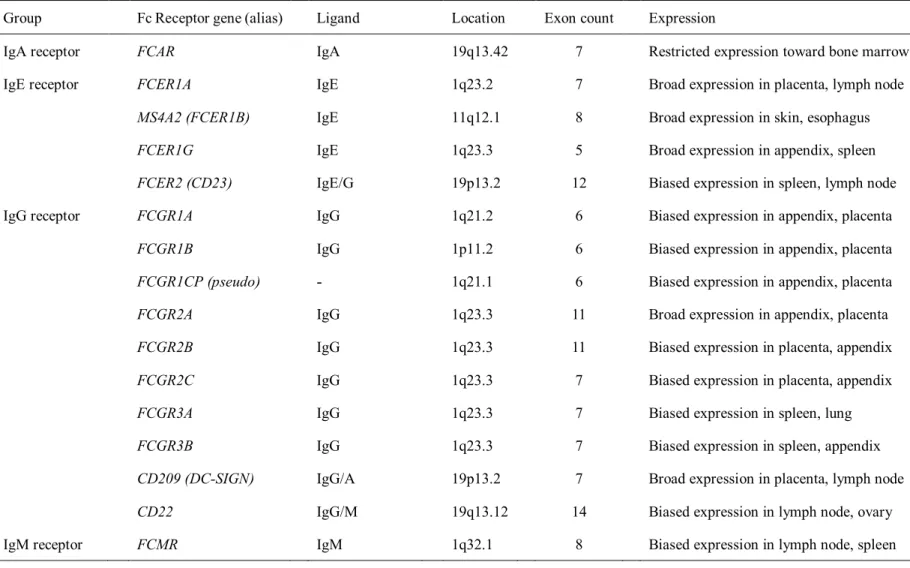
Association of the Fc receptor genes with human diseases
Immunoglobulin G glycosylation genes
IgG glycosylation and its impact on antibody activity and anti-inflammatory
Also, IgG modulates B and T cell responses, mainly involved in the organization and maintenance of the immune responses (Nimmerjahn F, 2007; Nimmerjahn F, 2010). In recent years, a number of studies have been published on the association of polymorphisms in the Fc receptor genes and a variety of human diseases, including infectious as well as autoimmune diseases (Biezeveld M, 2007). Since the KD is activated by an infectious agent in genetically predisposed children, in this study we investigated the possible association of coding variants found in the 15 Fc receptor genes with KD.
KD patients were recruited from 12 hospitals in Korea currently participating in the Korean Kawasaki Disease Genetics Consortium from June 2008 to February 2019. However, in the combined analysis of detection data and recurrence data, we did not find any significant association between immunoglobulin Fc receptor gene coding variants and susceptibility to KD (Table 10). In conclusion, coding variants of Fc receptor genes are not associated with KD, suggesting that Fc receptor genes may not play a crucial role in the pathogenesis of KD apart from the previously confirmed FCGR2Agene.
Immunoglobulin glycosylation plays an important role in immune diseases and immunoglobulin therapy. The ability of IVIG to suppress the inflammatory response was lost in the absence of glycosylation or sialylation of IgG (Kaneko Y, 2006). Antibody glycosylation, particularly in the Fc region of IgG, has been extensively studied in disease (Daeron M, 2014).
KD patients were recruited from 12 hospitals in Korea currently participating in the Korean Kawasaki Disease Genetics Consortium from June 2008 to February 2019, as described in Chapter III Subjects and Methods. KD patients were recruited from 12 hospitals in Korea currently participating in the Korean Kawasaki Disease Genetics Consortium from June 2008 to February 2019. In addition, we examined the associations of IL16 rs11556218 (risk allele: T) with clinical genotype of variable with KD in IVIG subgroups.
After replication analysis, one new susceptibility-coding variant (rs11556218: c.3441T>G, p.Asn1147Lys) in the IL16 gene was validated as associated with IVIG non-response.
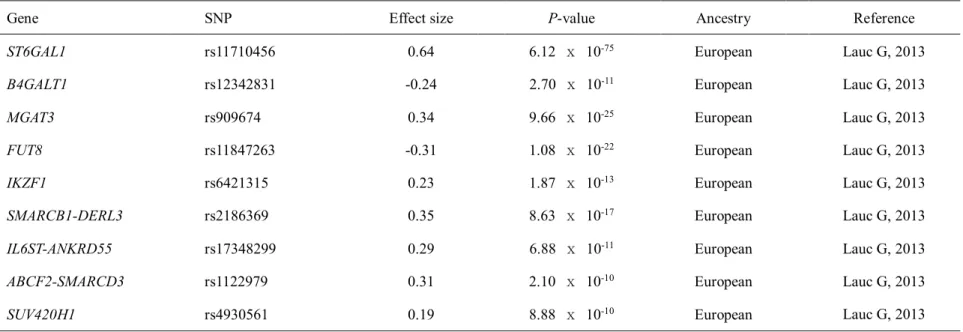
Association of the immunoglobulin G glycosylation genes with human diseases
Discovery of 20 nsSNPs in 15 Fc receptor genes by capillary sequencing using
A total of 136 primer sets covering coding regions of the 15 human Fc receptor genes were purchased from Thermo Fisher Scientific and tested for PCR amplification using 2 DNA samples. All primer sets were successfully PCR-amplified, except for 3 primer sets (primers for exon 3 of FCGR1A, exon 4 of FCGR2A and exon 7 of FCRLB) (Figure 2). Primers for exon 3 of FCGR1A, exon 4 of FCGR2A and exon 7 of FCRLB did not work.
After excluding five very rare variants having MAF < 0.01 and the quality control threshold (HWE P-value < 10-3, and missing rate), a total of 15 nsSNPs were selected for the next pilot association test. A1, reference allele; A2, alternative allele; AF; allele frequency; D, harmful; MAF, minor allele frequency; na, not available; nSNP, nonsynonymous SNP; OR, odds ratio; PoD, possibly harmful; PrD, possibly harmful; SNP, single nucleotide polymorphism. Selection of seven candidate nsSNPs found in human Fc receptor genes for replication study.
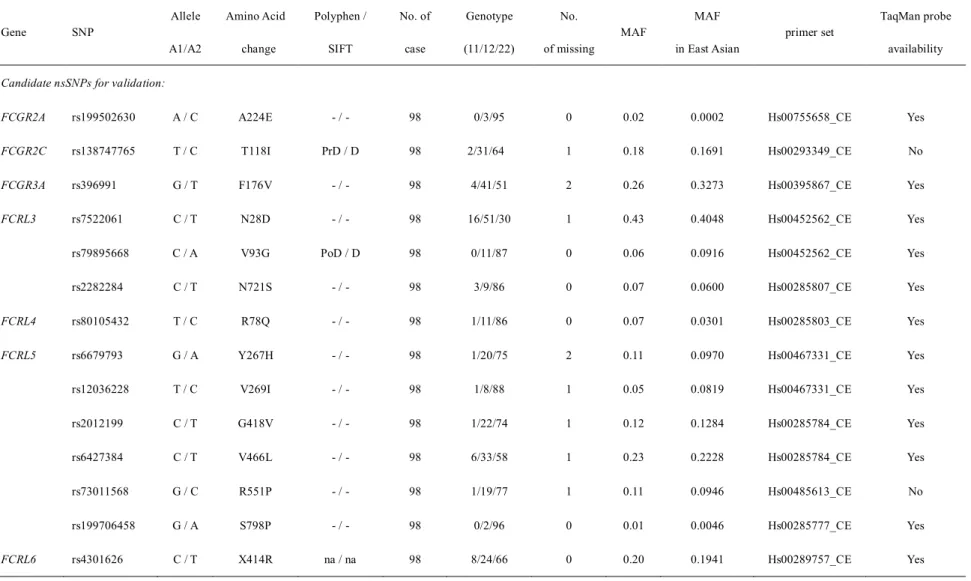
Selection of seven candidate nsSNPs found in the human Fc receptor genes for
Association study of the selected seven candidate nsSNPs with KD using
Numerous studies have evaluated the H131R coding polymorphism in the FCGR2A gene with the risk of several human immune diseases (Nimmerjahn F, 2007; Asano M, 2011). Recently, a few studies have reported a possible association between the H131R polymorphism in the FCGR2A gene and KD (Khor CC, 2011; Kim JJ, 2017). Thus, in this study, we tested the hypothesis that immunoglobulin Fc receptor genes are associated with susceptibility to KD.
Initially, we attempted to identify all coding variants of 15 human Fc receptor genes by capillary sequencing of 50 DNA samples of KD cases. Because of the high homology between Fc receptor genes, we used 136 predesigned primers covering the coding regions of 15 Fc receptor genes from Thermo Fisher Scientific. All 136 primer sets were successfully amplified by polymerase chain reaction (PCR), except for 3 primer sets (primers for exon 3 of FCGR1A, exon 4 of FCGR2A and exon 7 of FCRLB) (Figure 2), indicating that the quality of the primer sets is inferior . provided by the company are good.
In this study, we found a total of 20 nsSNPs in Fc receptor genes and tested six common nsSNPs for genetic association with KD in large case–control samples. However, we could not find any significance with KD, suggesting that Fc receptor genes are not associated with KD except previously confirmed H167R polymorphism of FCGR2Agene. A potential limitation of this study is that we used pre-made primer sets, we could only test with exons covered by these primer sets.
Due to the high sequence homology in Fc receptor genes, the exact target sequences are not analyzed, although all coding sequences are not amplified or amplified by PCR. It was also difficult to confirm that the tested genes were related to KD susceptibility because the genetic association study for rare coding variants was not performed.

ASSOCIATION STUDY OF THE NONSYNONYMOUS SNPs FOUND IN
A genetic variant rs1801274 in FCGR2A as a potential risk marker for Kawasaki disease: a case-control study and meta-analysis. The incidence of recurrent Kawasaki disease and related risk factors: from the results of nationwide surveys of Kawasaki disease in Japan. Consortium; Blue Mountains Eye Study.Comprehensive association study identifies FCGR2A as a susceptibility locus for Kawasaki disease.
Kim JJ, Yun SW, Yu JJ, Yoon KL, Lee KY, Kil HR, Kim GB, Han MK, Song MS, Lee HD, Ha KS, Sohn S, Ebata R, Hamada H, Suzuki H, Ito K, Onouchi Y , Hong YM, Jang GY, Lee JK; and the Korean Kawasaki Disease Genetics Consortium. Identification of SAMD9L as a susceptibility locus for intravenous immunoglobulin resistance in Kawasaki disease by genome-wide association analysis. Identification of LEF1 as a susceptibility locus for Kawasaki disease in patients younger than 6 months.
Kwon YC, Kim JJ, Yun SW, Yu JJ, Yoon KL, Lee KY, Kil HR, Kim GB, Han MK, Song MS, Lee HD, Ha KS, Sohn S, Hong YM, Jang GY, Lee JK; Korean Disease Genetics Consortium of Kawasaki. Descriptive epidemiology of Kawasaki disease in Japan based on the results of the 22nd nationwide survey. Efficacy and safety of intravenous immunoglobulin plus prednisolone therapy in patients with Kawasaki disease (Post RAISE): a multicenter, prospective cohort study.
Diagnosis, treatment, and long-term management of Kawasaki disease: a statement for healthcare professionals from the Committee on Rheumatic Fever, Endocarditis, and Kawasaki Disease, Council on Cardiovascular Disease i Young, American Heart Association. Treatment response in Kawasaki disease is associated with sialylation levels of endogenous but not therapeutic intravenous immunoglobulin G. Predicting failure to respond to standard high-dose gamma globulin therapy in patients with acute Kawasaki disease before starting treatment.
IL-1B polymorphism in association with initial intravenous immunoglobulin treatment failure in Taiwanese children with Kawasaki disease.
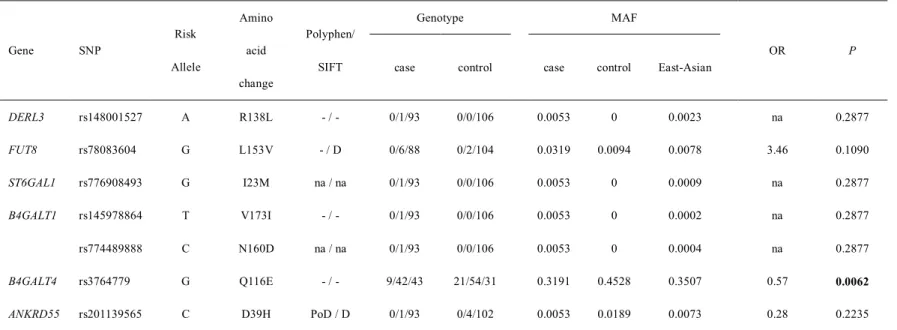
ASSOCIATION STUDY OF THE NONSYNONYMOUS SNPs FOUND IN
